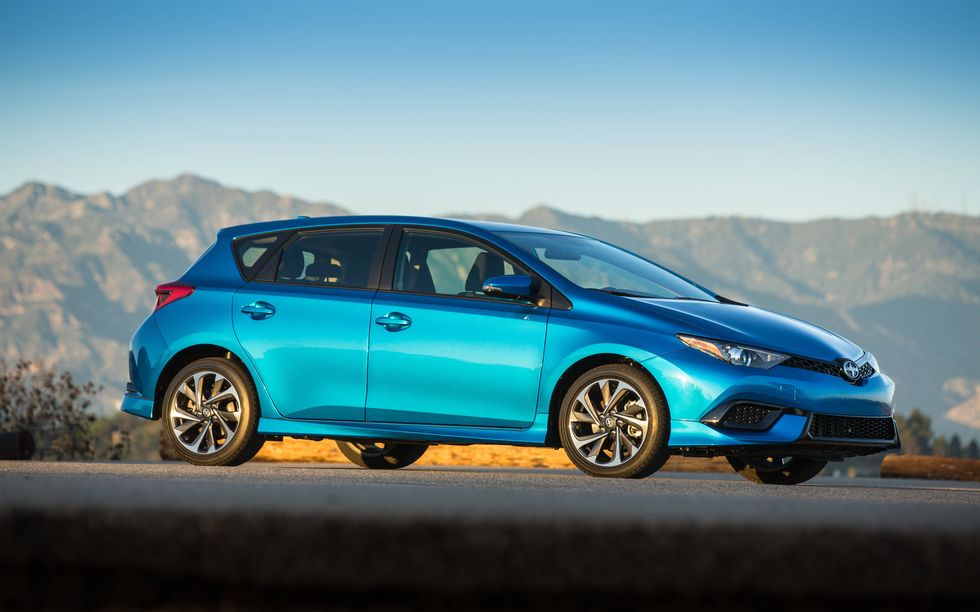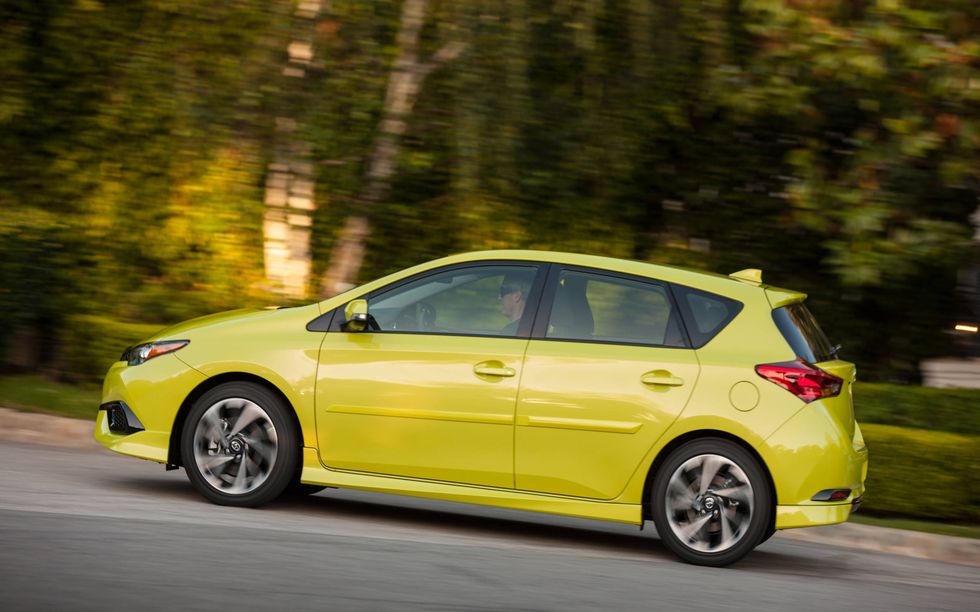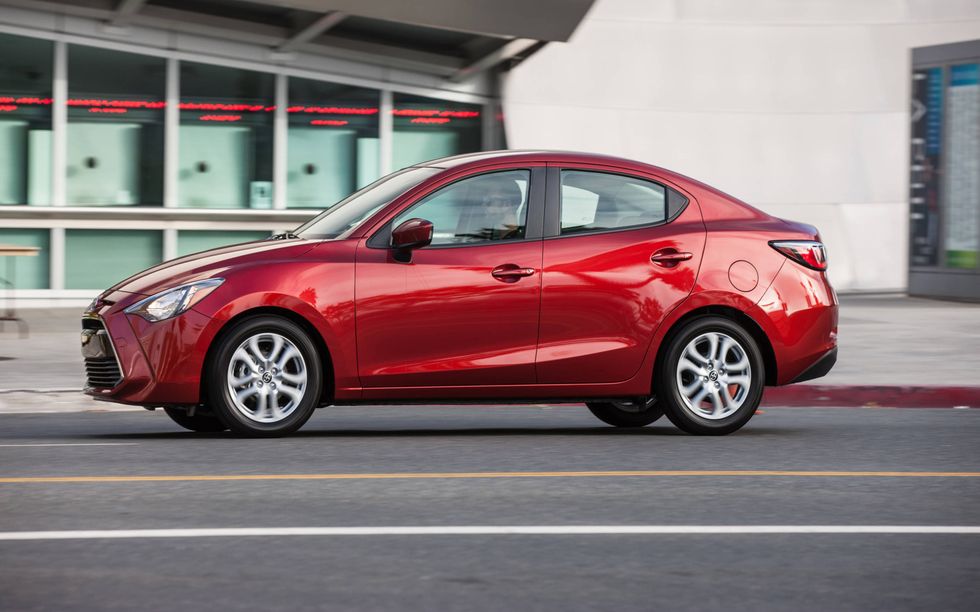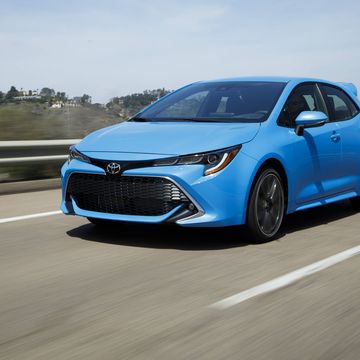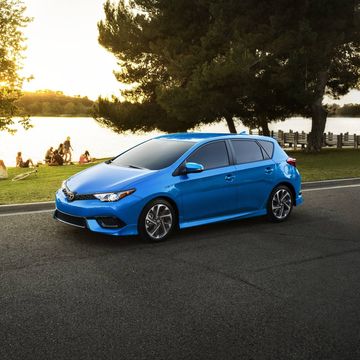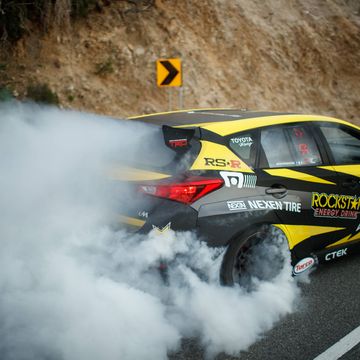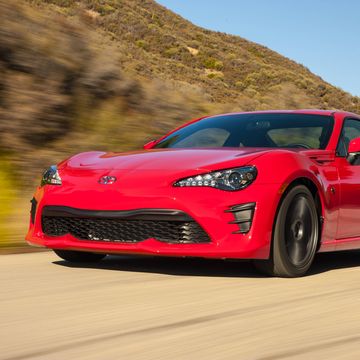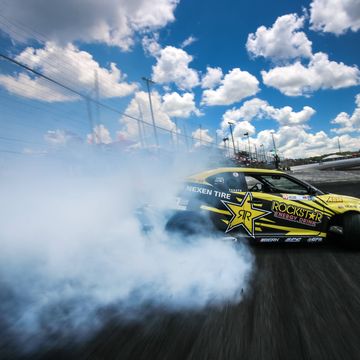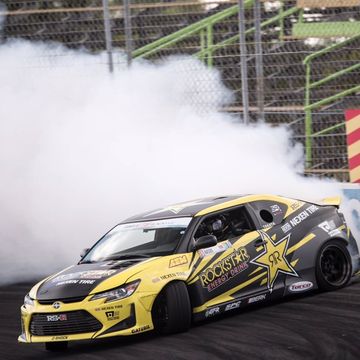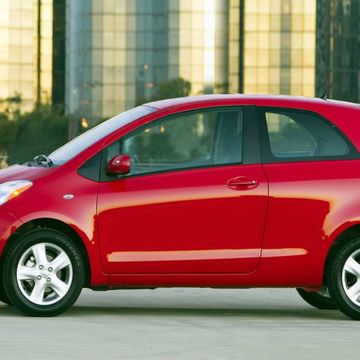What Are They?
There are two vehicles being presented here, both being debuted, marketed and advertised together by Scion, not to mention parked next to each other on Scion showroom floors starting Sept. 1 ... so we might as well introduce them together.
The compact hatchback Scion iM is a Scion version of the Japan-market Toyota Auris. It shares the same platform as the Toyota Corolla and Scion tC and kind of fills the same utilitarian wagon/hatchback role for Scion that the old Matrix wagon/hatchback did for Toyota, only on a smaller scale. The iM comes in just one trim level –- Mono Spec -- so your only choices are transmission and color. With a 137-hp 1.8-liter four-cylinder mated to a six-speed manual or CVT, it’s pretty straightforward.
The other entry, the iA, is the mutant love child of a marriage of corporate convenience, a desperate grab for sales, any sales, by a foundering division that managed to sell fewer than 60,000 vehicles total last year. Where did the iA come from? Mazda has this plant in Mexico that makes Mazda 2s, and the plant had a little extra capacity. Scion, the product planning budget of which was rerouted into Toyota during the Great Recession, needed a car to sell. But it couldn’t sell the Mazda 2 hatch because that would be too similar to the Scion iM. So Scion decided to try and sell a Mazda 2 sedan when even Mazda knew such an animal wouldn’t sell in the U.S. market. Heck, Mazda can’t even sell Mazda 2 hatchbacks and decided against ever offering the strange-looking sedan in its own showrooms.
Scion, if you didn’t offer the fabulous FR-S, we’d stage an intervention.
Under the mutant skin (or what Scion calls “daringly curved sheetmetal”) and behind the gigantic whale-shark “trapezoidal” grille, however, the iA is basically a Mazda 2, which is a solid B-segment people mover. It has a 106-hp 1.5-liter four mated to a six-speed manual or automatic. It gets up to 42 mpg hwy. There’s room inside for a family of four and some of their luggage in the trunk. It’s a solid car once you look beneath the skin and ignore the provenance.
What Are They Like to Drive?
Considering the two cars’ circuitous lineages, they’re both surprisingly stable and even responsive to drive, at least by the standards of their individual classes.
The iM is remarkably quiet in seemingly all circumstances. We didn’t run a dB meter in it or anything, but we’ll guess it’s as quiet as sedans a class or two up. CVT transmissions are getting better all the time, and this is certainly one of the better examples of that increasingly popular technology. For just tooling around town, you might not even know it’s a CVT, despite Scion’s programming in seven of those fake “steps” in the shifting algorithm. Step sternly on the throttle and you might notice some higher-revving whine from the 1.8-liter four -- peak output of 137 hp comes well up on the tach at 6,100 rpm, so to really make it move you’ll need some revs. Torque peak of 126 lb-ft also comes higher up on the scale too, at 4,000 rpm. Those numbers will move the 2,943-pound manual iM and 3,031-pound automatic around the city at respectable, if not impressive, rates. The six-speed manual clutch engages fairly high up in the pedal travel, which means a little more work for the driver. Inside, there is plenty of room for adults both front and back. There’s not a lot of luggage space behind the second-row folding seats, but overall –- especially considering its $19,255 starting sticker -- it’s a perfectly competent competitor in the class. The question is how many buyers will want this over a Mazda 3 iTouring, Focus SE, Elantra GT or Golf S, the competitors Scion lists for it.
The iA, meanwhile ... well, Scion says that, of the focus groupers who liked it, style was one of the things they liked most. So there you go. Behind the wheel in the automatic (not a CVT), the car feels really plodding. Once you step on it, however, it shows its Mazda Zoom Zoom and responds with stable and predictable understeer on twisty mountain two-lanes. We are reminded that we liked driving the Mazda 2, too. The manual transmission is no short-throw Miata, though, requiring lengthy pulls to change gears and, again, longer clutch-pedal takeup before engagement. But if you’re feeling like your iA is too slow, that’s only in the lower rev ranges -- just stomp on the throttle, and it’ll rise nicely to the occasion. The tiny 1.5-liter manages only 106 hp total and 1 mpg more peak highway mileage than the 1.8 in the iM, though, another potential hit on iA sales. Still, 42 mpg highway is pretty darn good. And sticker price starts at $16,495, which is downright affordable.
Do I Want Them?
As they sometimes yell at us in those driving schools: Scion, what are you doing? Scion has had two solid hits in its 12-year existence: the first xB and the current FR-S. Some would say it’s had only one hit, and it’s not the xB. If you measure success by sales, it has no hits at the moment. The iQ? xD? After our favorite, the FR-S, all the rest of the Scions were the automotive equivalent of an appendix in the giant carcass of Toyota: present all the time for no real purpose and occasionally troublesome.
Will these two new models pull Scion out of its death spiral? Sale goals are meek: high 30,000s to 40,000 for the iM and 20,000 for the iA. So even if these two surpass those numbers, it’s doubtful they’ll make Scion a player. We’ll find out for sure starting Sept. 1 when the pair goes on sale.
Good luck, Scion. But in the meantime, find another xB or FR-S to make the division more than just a youth sales experiment, will ya?
Vehicle Model Information
ON SALE: Sept. 1
BASE PRICE: $16,495
POWERTRAIN: front-engine, front wheel-drive, 1.5-liter four
OUTPUT: 106 hp at 6000 rpm; 103 lb ft at 4000 rpm
CURB WEIGHT: 2385
FUEL ECONOMY: 31/41/35 EPA city/hwy/combined

